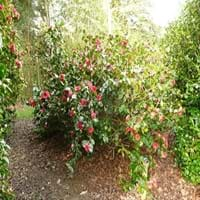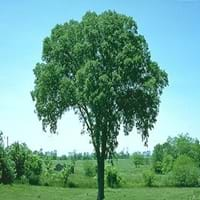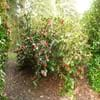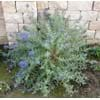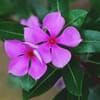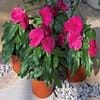Life Span
Perennial
Perennial
Type
Broadleaf Evergreen
Tree
Origin
China, Japan, Korea
North America
Types
Not Available
Bergmann's Elm, Chestnut-leafed Elm, Hangzhou Elm
Number of Varieties
Not Available
Habitat
Dappled Shade, Shady Edge, Woodland Garden
Woodland Garden Canopy
USDA Hardiness Zone
7-9
3-9
Sunset Zone
4, 5, 6, 7, 8, 9, 12, 14, 15, 16, 17, 18, 19, 20, 21, 22, 23, 24
1a, 1b, 2a, 2b, 3a, 3b, 4, 5, 6, 7, 8, 9, 10, 11, 14, 15, 16, 17, 18, 19, 20, 21
Habit
Oval/Rounded
Upright/Erect
Flower Color
Light Pink
Green
Flower Color Modifier
Not Available
Bicolor
Leaf Color in Spring
Dark Green
Light Green
Leaf Color in Summer
Dark Green
Dark Green
Leaf Color in Fall
Dark Green
Light Yellow
Leaf Color in Winter
Dark Green
Not Available
Plant Season
Spring, Summer, Fall, Winter
Spring, Summer, Fall, Winter
Sunlight
Partial Sun, Partial shade
Full Sun
The pH of Soil
Acidic, Neutral
Acidic, Neutral
Soil Drainage
Average
Average
Bloom Time
Early Spring, Late Winter
Early Spring
Tolerances
Not Available
Pollution
Where to Plant?
Ground, Pot
Ground
How to Plant?
Cuttings, Seedlings
Budding, Grafting, Seedlings, Semi-hardwood cuttings, Softwood cuttings
Plant Maintenance
Medium
Medium
Watering Requirements
Average Water Needs, Do Not over Water
Average Water Needs, Do Not over Water, Requires regular watering
In Summer
Drought Tolerant, Average Water
Lots of watering
In Spring
Moderate
Moderate
In Winter
Average Water
Average Water
Soil pH
Acidic, Neutral
Acidic, Neutral
Soil Drainage Capacity
Average
Average
Sun Exposure
Partial Sun, Partial shade
Full Sun
Pruning
Remove damaged leaves, Remove dead branches, Remove dead leaves
Remove damaged leaves, Remove dead branches, Remove dead leaves, Remove dead or diseased plant parts, Remove deadheads
Fertilizers
10-10-10, 8-8-8
Complete balanced fertilizer, fertilize in spring
Pests and Diseases
Black Mold, Flower Blight, Free of serious pests and diseases, Leaf Gall, Leaf spot
Red blotch
Plant Tolerance
Not Available
Pollution
Flower Petal Number
Double
Single
Foliage Texture
Medium
Medium
Foliage Sheen
Glossy
Matte
Attracts
Butterflies
Birds, Butterflies, Not Available
Allergy
no allergic reactions
Pollen
Aesthetic Uses
Bonsai
Not Used For Aesthetic Purpose
Beauty Benefits
Not Available
Good for skin and hair
Environmental Uses
Air purification
Air purification, Nesting sites for birds, Shadow Tree
Medicinal Uses
Astringent, Cancer, Haemostatic, Salve, Tonic
Antispasmodic, Astringent, Birthing aid, Haemostatic, Salve
Part of Plant Used
Flowers, Leaves, Seeds
Bark, Fibre, Leaves
Other Uses
As a tea substitute, Used as a hair-dressing oil, Used for making green dye
Container, String, Used for woodware, Used in paper industry
Used As Indoor Plant
Yes
No
Used As Outdoor Plant
Yes
Yes
Garden Design
Feature Plant, Foundation, Mixed Border, Topiary, Bonsai, Espalier
Feature Plant, Shade Trees, Street Trees
Botanical Name
CAMELLIA japonica 'Debutante'
ULMUS americana 'Augustine'
Common Name
Camellia, Debutante Camellia, Japanese Camellia
American Elm, Augustine Elm
In Hindi
Japanese Camellia
American Elm Tree
In German
Japanische Kamelie
Amerikanische Ulme
In French
Camellia japonais
Américaine Elm Tree
In Spanish
Camelia japonesa
Olmo Americano Árbol
In Greek
Ιαπωνικά Camellia
American Elm Tree
In Portuguese
Camellia japonês
Árvore de olmo americano
In Polish
Japoński Camellia
Amerykańska Elm Tree
In Latin
Camellia Italica
Latin ulmo
Phylum
Magnoliophyta
Magnoliophyta
Class
Magnoliopsida
Magnoliopsida
Clade
Angiosperms, Asterids, Eudicots
Angiosperms, Eudicots, Rosids
Tribe
Theaeae
Not Available
Subfamily
Theoideae
Not Available
Number of Species
Not Available
Not Available
Season and Care of Japanese Camellia and American Elm
Season and care of Japanese Camellia and American Elm is important to know. While considering everything about Japanese Camellia and American Elm Care, growing season is an essential factor. Japanese Camellia season is Spring, Summer, Fall and Winter and American Elm season is Spring, Summer, Fall and Winter. The type of soil for Japanese Camellia is Loam and for American Elm is Loam while the PH of soil for Japanese Camellia is Acidic, Neutral and for American Elm is Acidic, Neutral.
Japanese Camellia and American Elm Physical Information
Japanese Camellia and American Elm physical information is very important for comparison. Japanese Camellia height is 210.00 cm and width 165.00 cm whereas American Elm height is 3,900.00 cm and width 3,700.00 cm. The color specification of Japanese Camellia and American Elm are as follows:
Japanese Camellia flower color: Light Pink
Japanese Camellia leaf color: Dark Green
American Elm flower color: Green
- American Elm leaf color: Light Green
Care of Japanese Camellia and American Elm
Care of Japanese Camellia and American Elm include pruning, fertilizers, watering etc. Japanese Camellia pruning is done Remove damaged leaves, Remove dead branches and Remove dead leaves and American Elm pruning is done Remove damaged leaves, Remove dead branches, Remove dead leaves, Remove dead or diseased plant parts and Remove deadheads. In summer Japanese Camellia needs Drought Tolerant, Average Water and in winter, it needs Average Water. Whereas, in summer American Elm needs Lots of watering and in winter, it needs Average Water.
